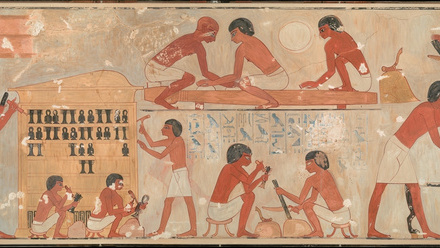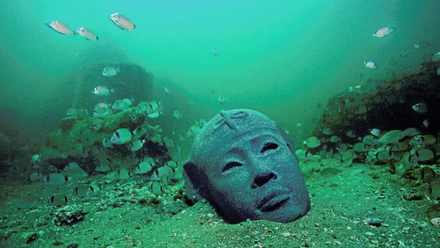Tell el-Amarna M50.14-16
Excavations at the domestic building complex M50.14-16 at Amarna in 2014 yielded large quantities of raw glass, which is of similar size and colour to that found in the Uluburun shipwreck. As archaeological material cannot be exported from Egypt, it is planned to carry out chemical analysis using portable XRF equipment, which can provide information on the origins of and trade in both raw materials and colourants.
This project is hosted by the Amarna Project
Hodgkinson, A. 2016. ‘Amarna glass: from Egypt through the ancient world’, Egyptian Archaeology 48, 23-27.
Read the preliminary report for 2017 here
Read about the previous season here.
End of season report (7 October – 2 November 2017)
Building complex M50.14-16 lies in the Main City South at Amarna, in the vicinity of the house of Ranefer and the area of the Grid 12 houses, excavated in the early 2000s. An area of c.520m² was excavated in 2014 and 2017 in order to understand the scope of industrial activities at the site during the Amarna Period (fig. 1). The complex was excavated in 1922 by C. L. Woolley on behalf of the EES, and recognised as a glass workshop, but many questions remained regarding the finds, firing structures and the original plan. The 2014 season yielded important results, making possible the correction of the original plan and the identification of the site as a jewellery workshop producing beads and amulets from glass, faience and agate. In addition, the discovery of two glass ingots, one of which corresponds to the ingots found on board the Uluburun shipwreck, as well as large quantities of cylindrical vessels, which were used as glass ingot moulds (fig. 2), highlighted the significance of the site.
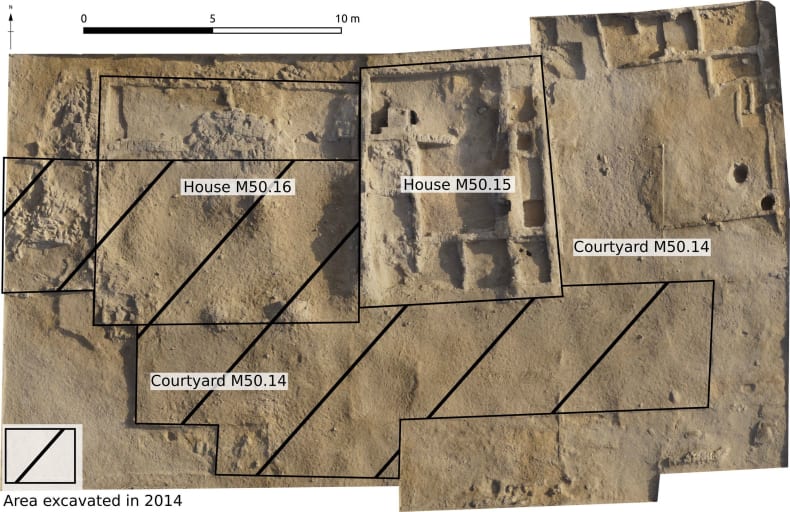
Figure 1. Orthophoto of the site subsequent to excavation on October 31st 2017.
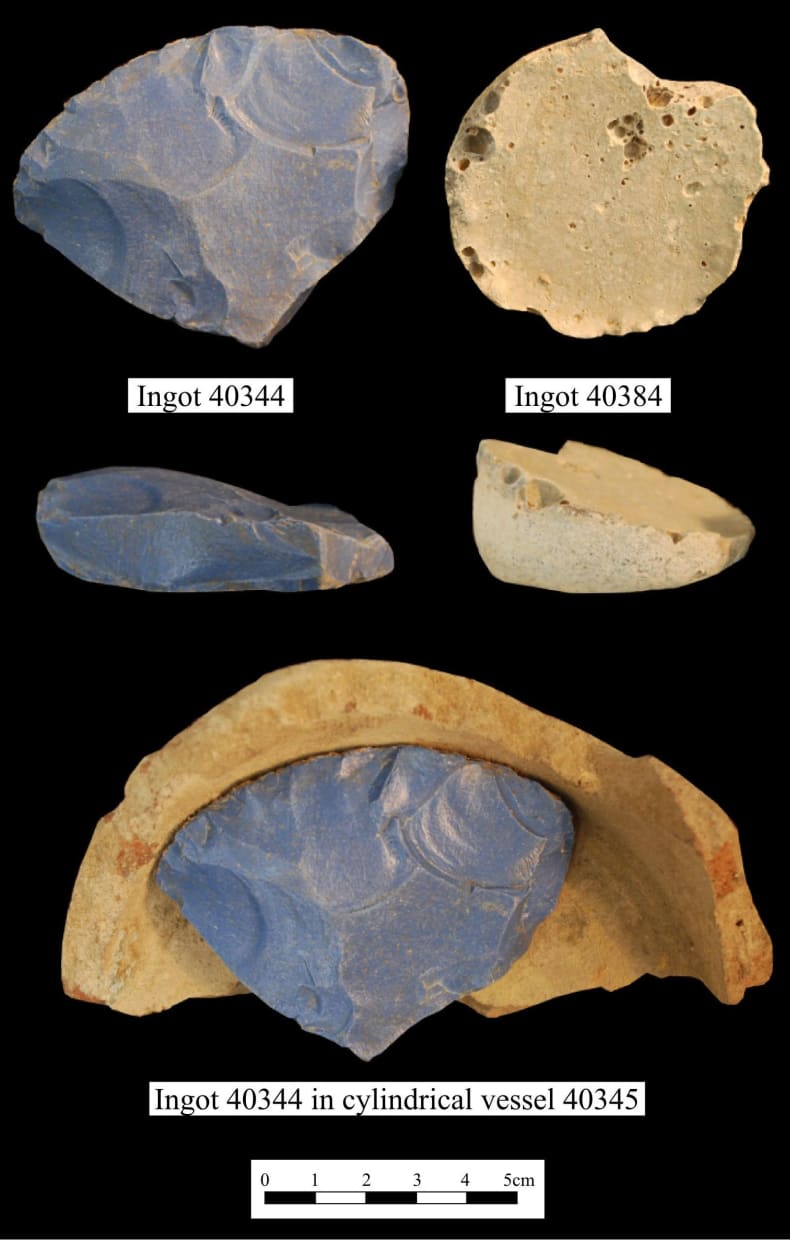
Figure 2. Glass ingots found in 2014.
The 2014 season focussed on the excavation of the southern part of house M50.16, a larger structure, and the sections of courtyard M50.14 directly south of M50.16. By contrast, the 2017 season saw the excavation of the eastern, south-eastern, and western courtyard areas, together with house M50.15, which was excavated in full.
House M50.15 was found to have been erected on the natural desert surface and partially on top of an ancient rubbish pit, which was evident in the northern sections of the house (fig. 3). Because of the previous excavations and the fact that the walls were not very well preserved, it was not possible to identify the purpose of the individual rooms, but it is likely that the building was a domestic structure. The northern sections, including the northern boundary wall of M50.16, were also excavated in 2017, in addition to a strip to the west of M50.16, which contained an area of mud-brick collapse (fig. 4). In situ dumped household pottery was discovered in the gap between the western side of the eastern boundary wall of M50.16 and the western wall of M50.15 (fig. 5).
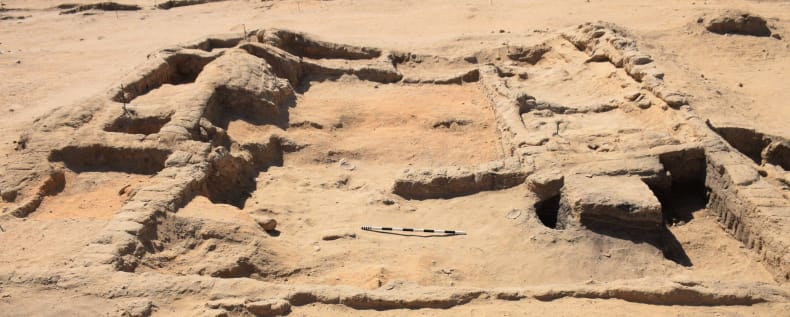
Figure 3. House M50.15, looking south.
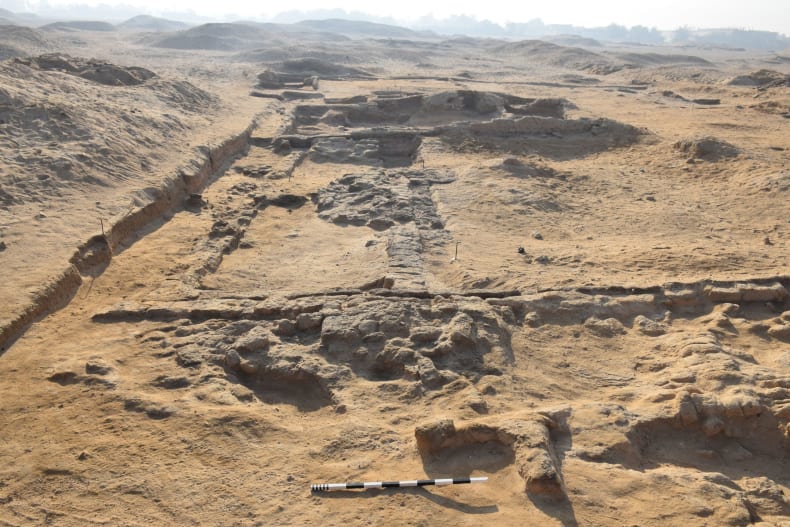
Figure 4. The area east of M50.16 and the northern parts of M50.16, looking east and revealing mud-brick collapse.
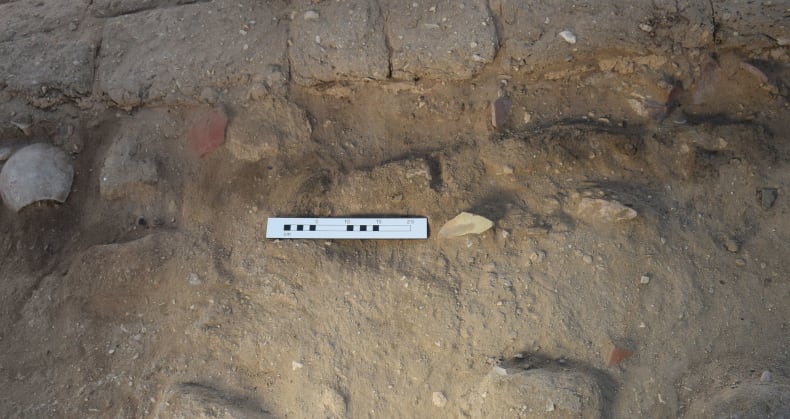
Figure 5. Household pottery, dumped against the eastern wall of M50.16, looking east.
A series of small fireplaces and two larger oven pits were excavated in the eastern courtyard, while the southern boundary wall was found to accommodate one oven pit, forming a corner around it (fig. 6). Tools from copper-alloy, stone, and pottery were also discovered, and an almost intact, clay-lined and blue-painted water-jar was found in the eastern courtyard (fig. 7).
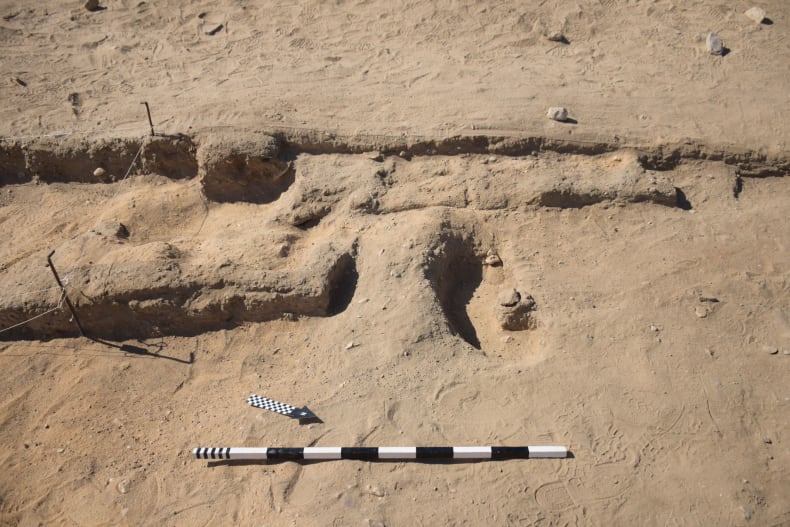
Figure 6. An oven pit, surrounded on two sides by the southern boundary wall.
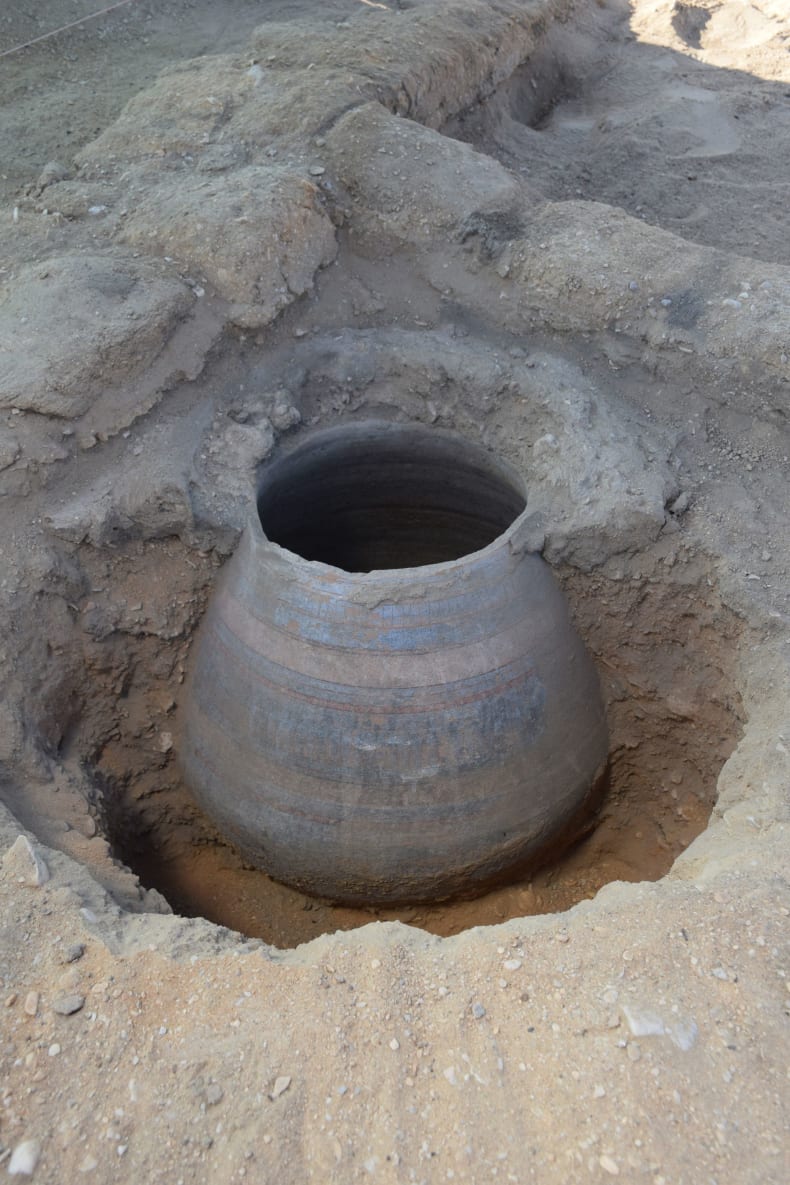
Figure 7. A blue-painted pottery vessel in the corner of two walls in the eastern courtyard.
The courtyard south and east of the houses contained much evidence of glass-working and faience manufacture. While the 2014 season brought forth a large quantity of agate chippings south of M50.16, evidence of metal-working, in the shape of crucibles containing remains of copper-alloy, were first identified during the 2017 season. Again, numerous raw glass chips, rods and bars, unfinished beads, faience moulds, amulets and beads were discovered, highlighting a busy vitreous materials industry. These finds are similar to those made during the excavations at the house of Ranefer and Grid 12, and concur with the hypothesis that this area of the Main City South at Amarna was somewhat specialised in this activity.
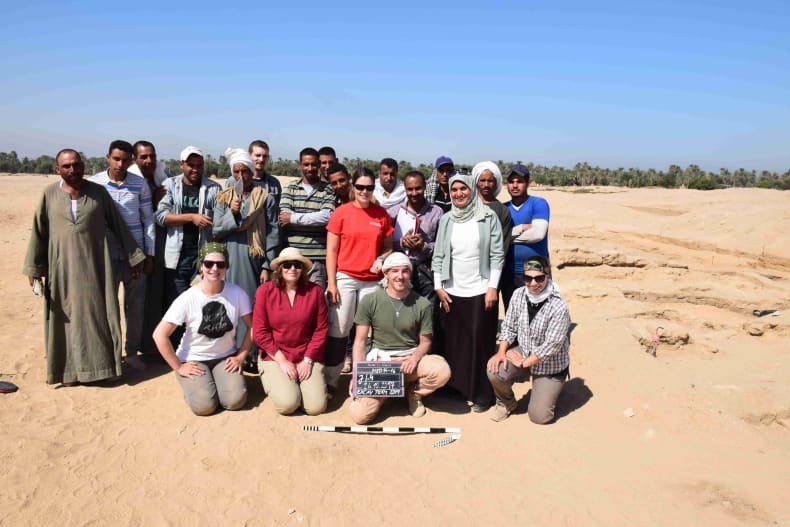
Figure 8. The excavation team in 2017.
The team consisted of six archaeologists and 13 workmen from et-Till and Hagg Qandil, as well as our inspector Kariman Abdelalim (fig. 8). We are grateful for the support of the Egyptian Ministry of State for Antiquities and the Amarna Project, and thank the EES for funding the 2017 fieldwork.
The first week of the 2017 season
Work began on Saturday 7th of October 2017 and the first few days have gone very quickly with many promising results. After opening several full and half squares, the mud-brick architecture of building M50.15 shows nicely, and we have already been able to add walls to the 1922 Woolley plan. There are also some collapse layers, which may reveal some original layers not excavated by the early excavators. We have three and a half more weeks to go, and plan to clear the entire area of M50.14-16 to reveal further results.
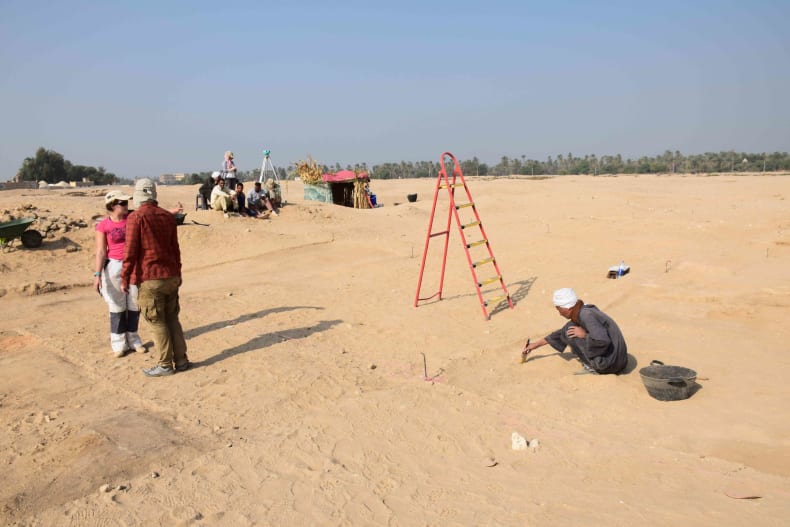
The eastern squares, looking SW, with Kimberley Watt and Antonio Cantele discussing, and our traditional sabata (shelter) in the background,
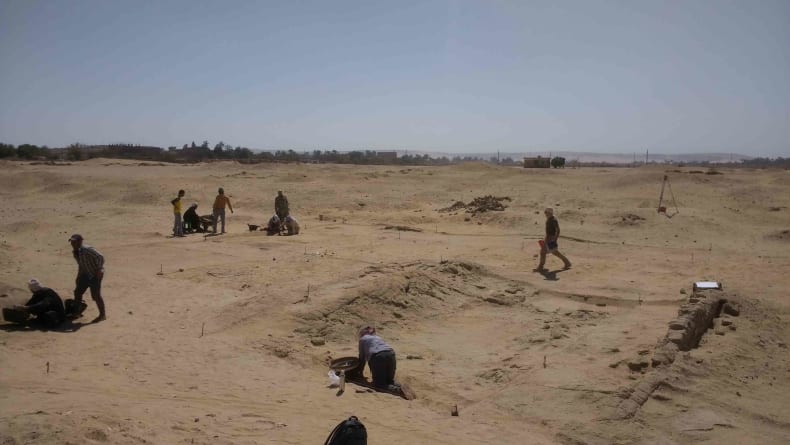
The northern squares, looking SE into house M50.15,
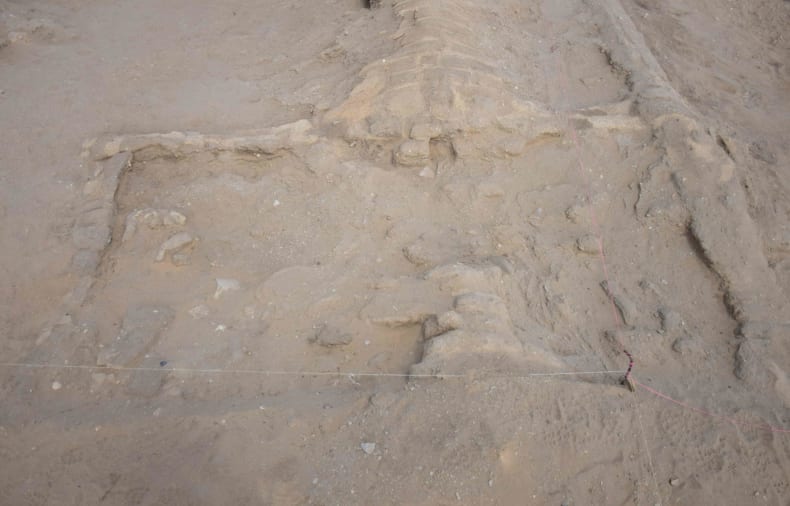
A previously un-noted room and a possible staircase in the SE of house M50.15, with collapse layers
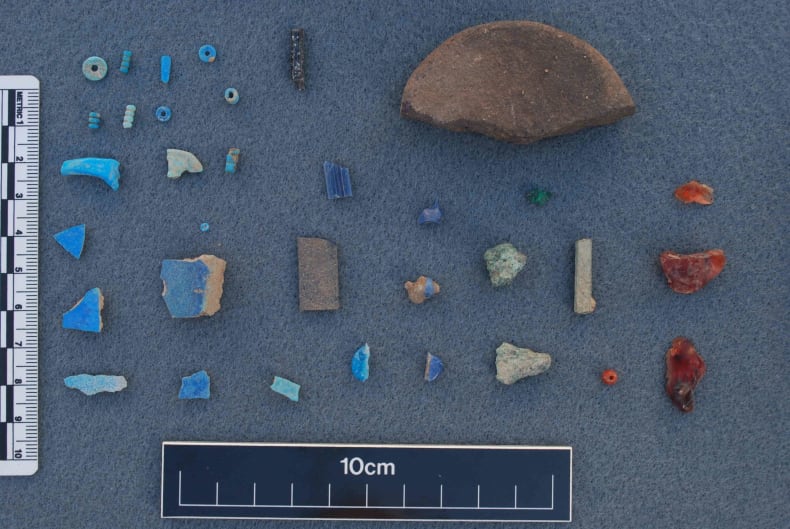
An overview of the finds we have found so far, including faience jewellery and tile fragments, glass-working pieces and glass beads, a quartzite inlay and some copper-alloy pieces and agate debitage and a bead.

